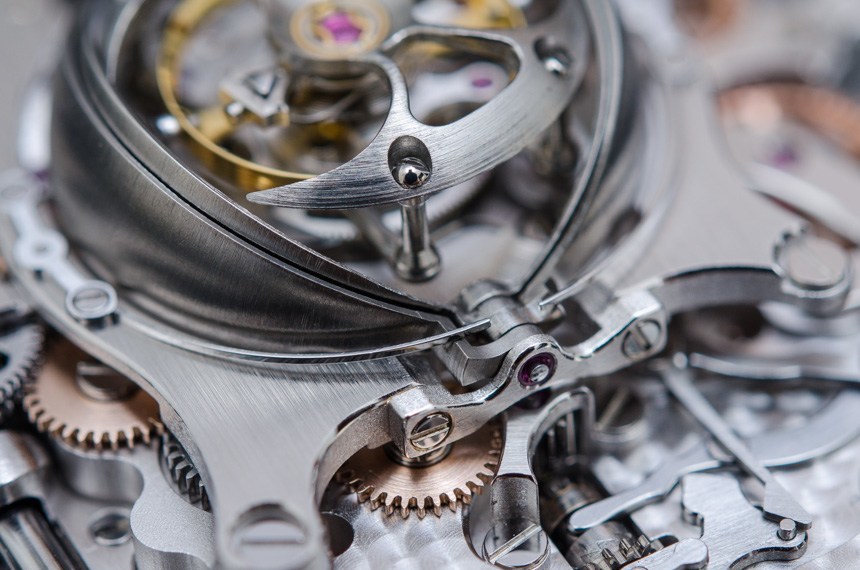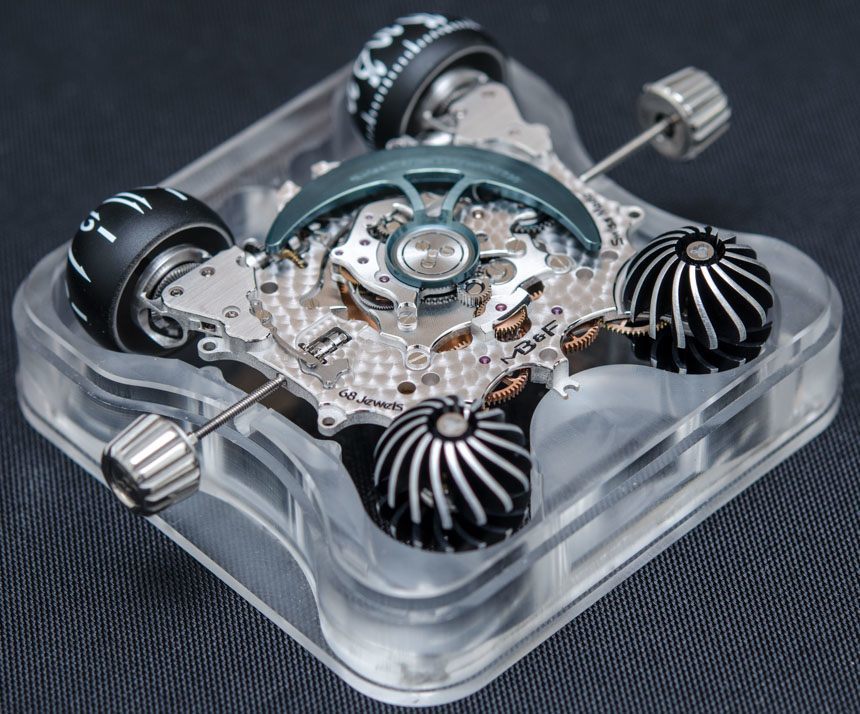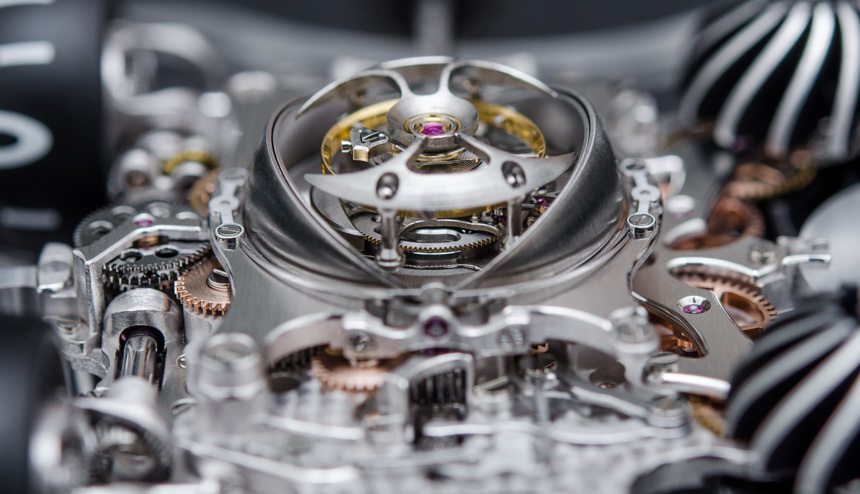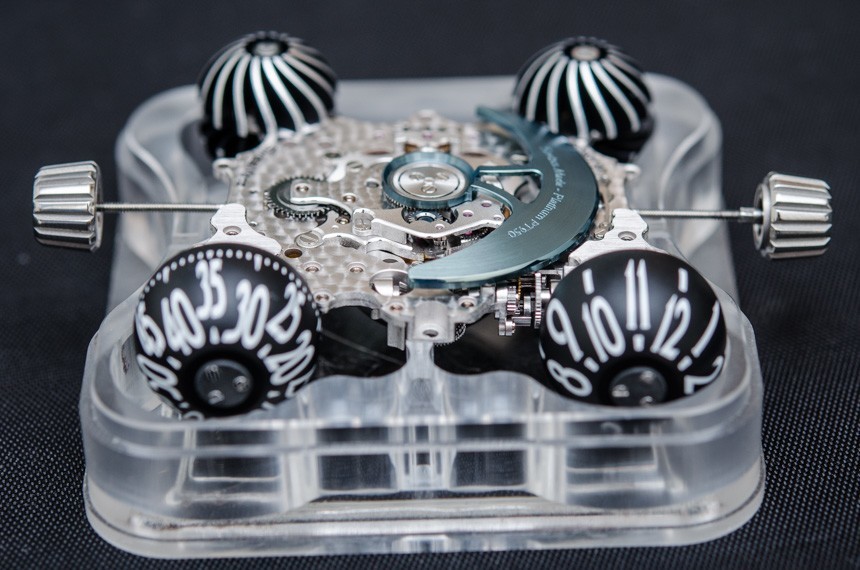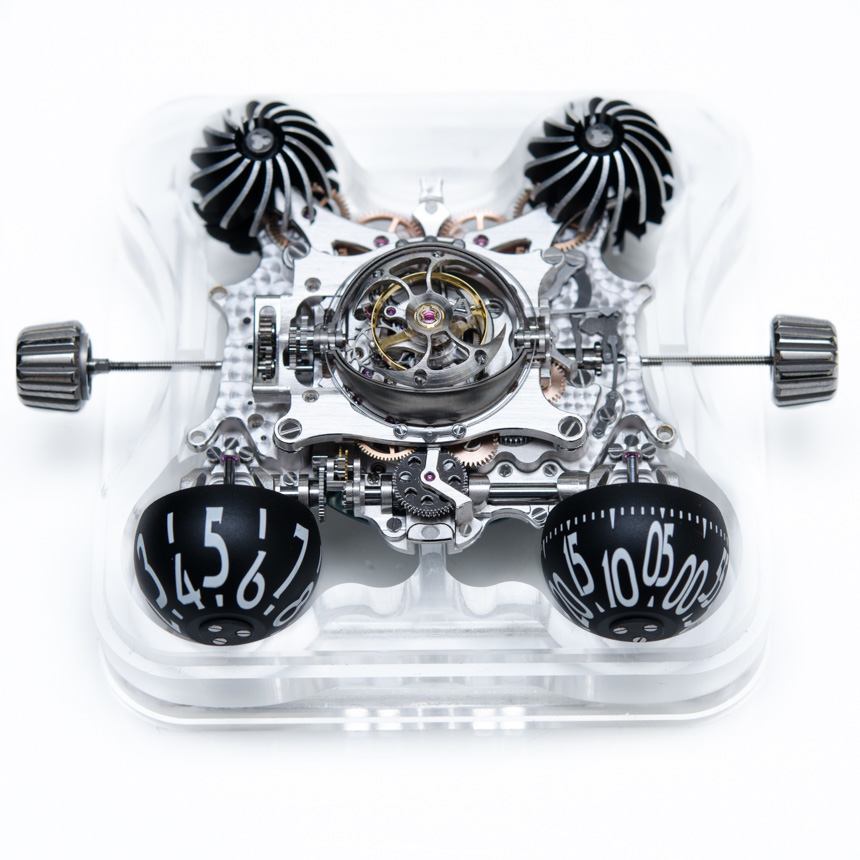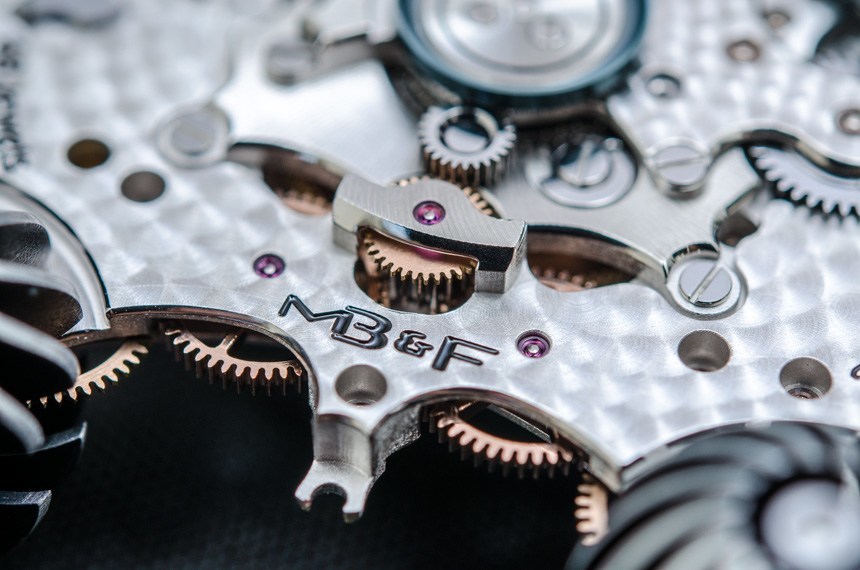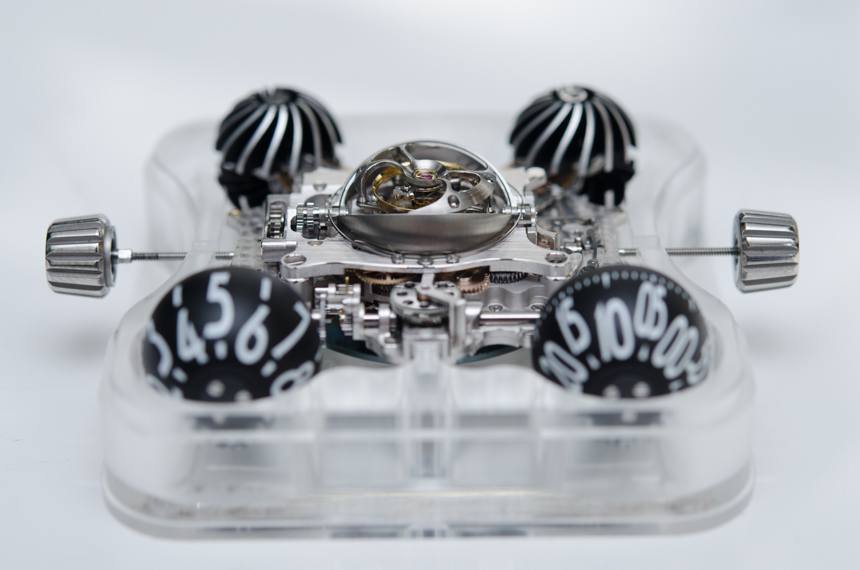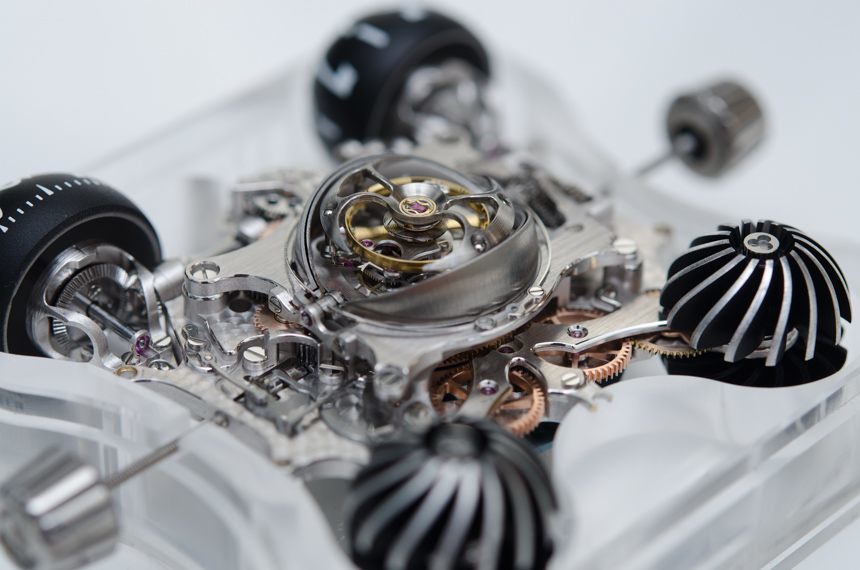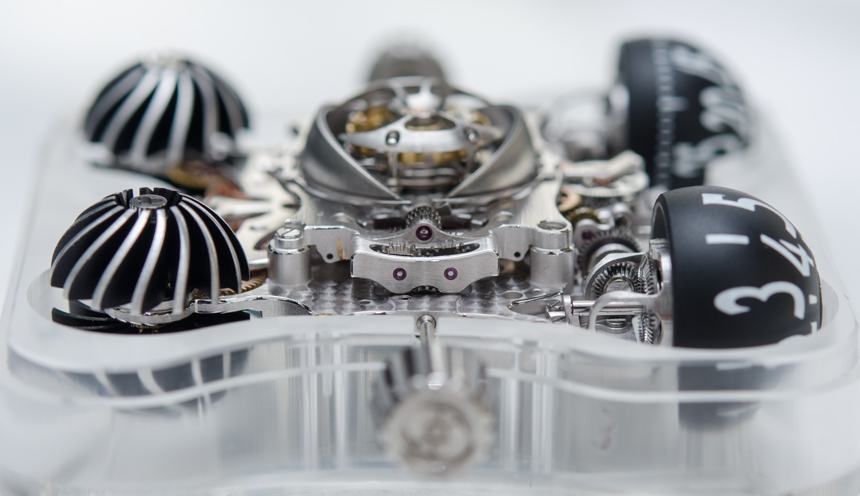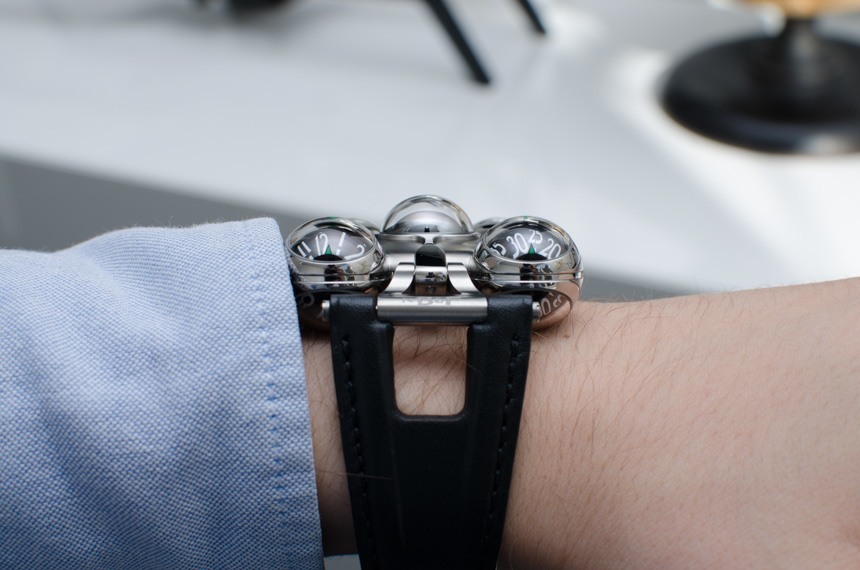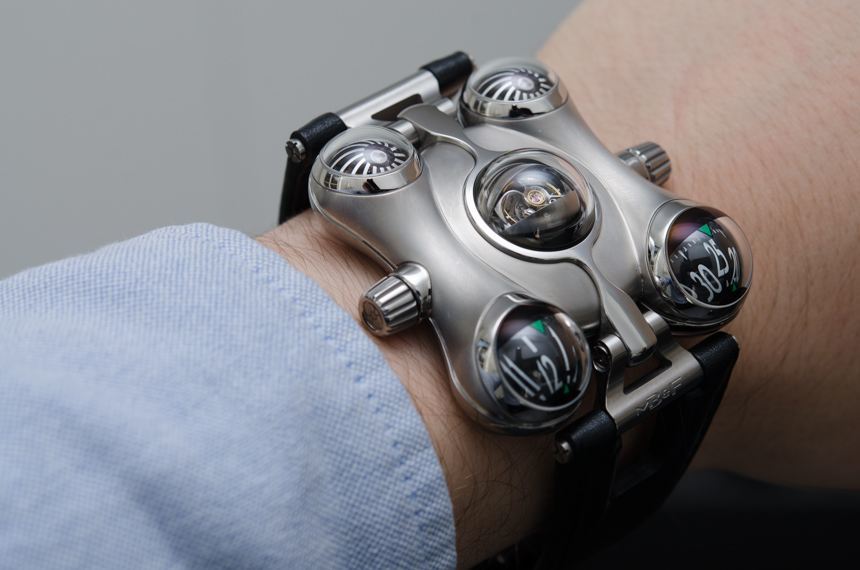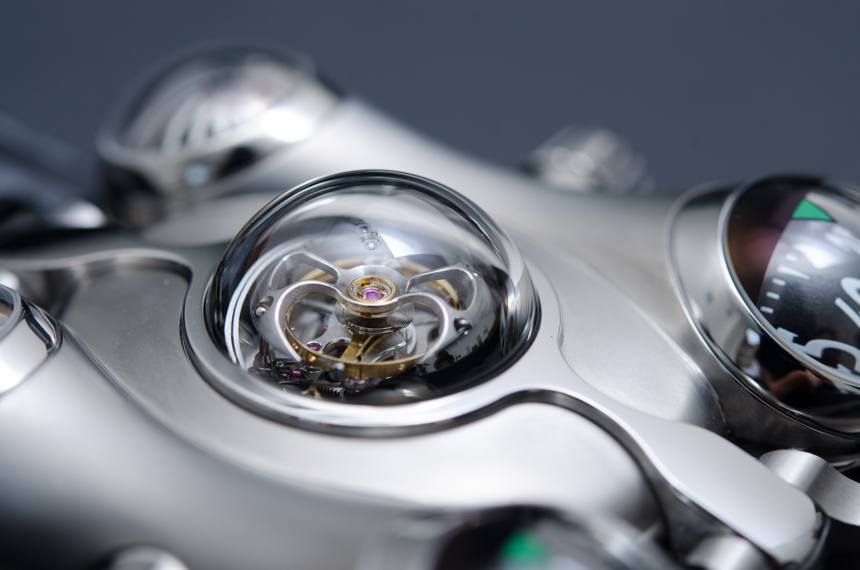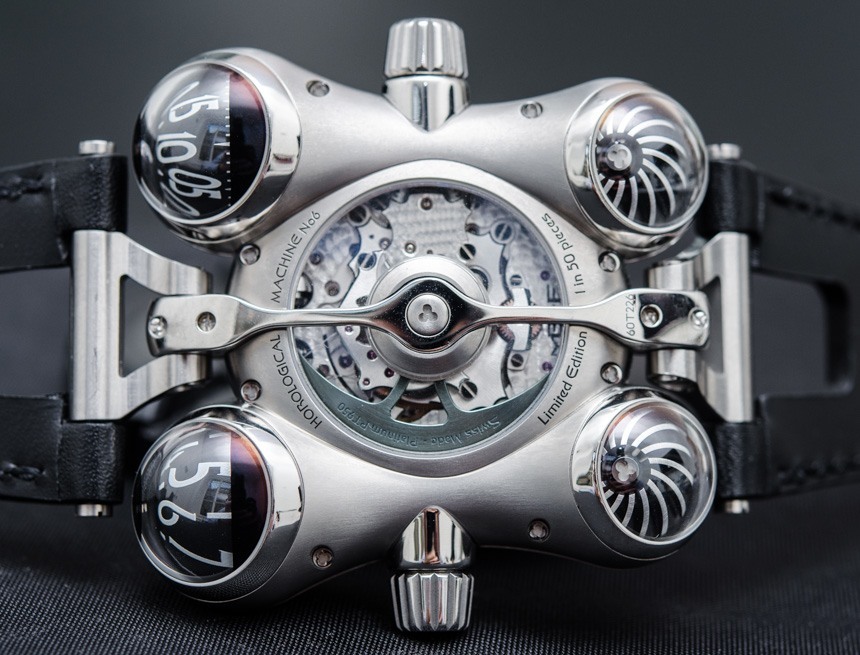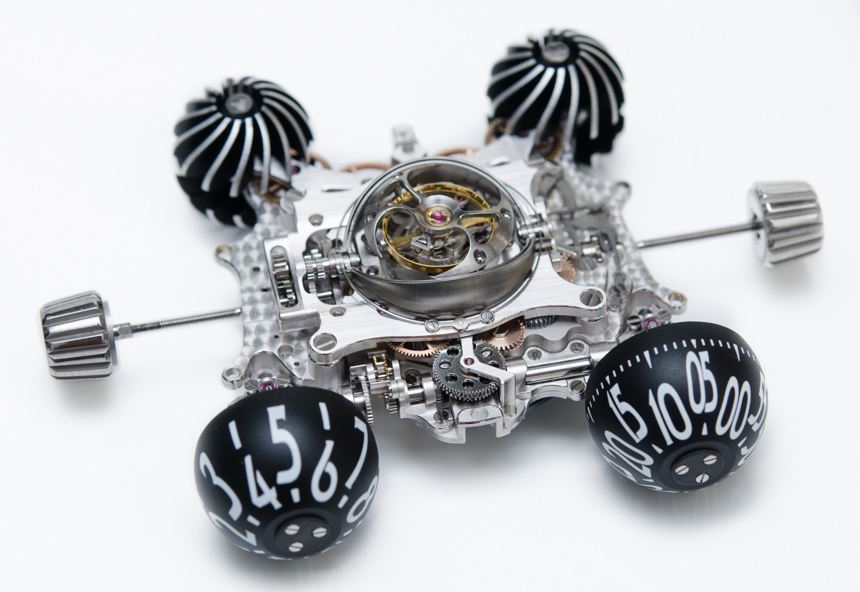
With this article, we are launching a new series of articles dedicated to watch movements. In this irregular series, we will be looking at calibers that we consider to be historically important, technically challenging and unique, or just quite simply fascinating. Today, we begin with a very close and detailed look at the movement beating inside the brand new MB&F HM6 Space Pirate. We need to point out that in this series, all our attention will be dedicated to the movement (which we will always look at uncased, and not through a sapphire case back), and we will not go into a detailed discussion related to the concept behind the watch in question – as you will always be able to (re-)acquaint yourselves with it in our original hands-on articles. Without further ado, let’s dive head first into the amazing world of MB&F movements and, more specifically, that of the MB&F HM6 Space Pirate.
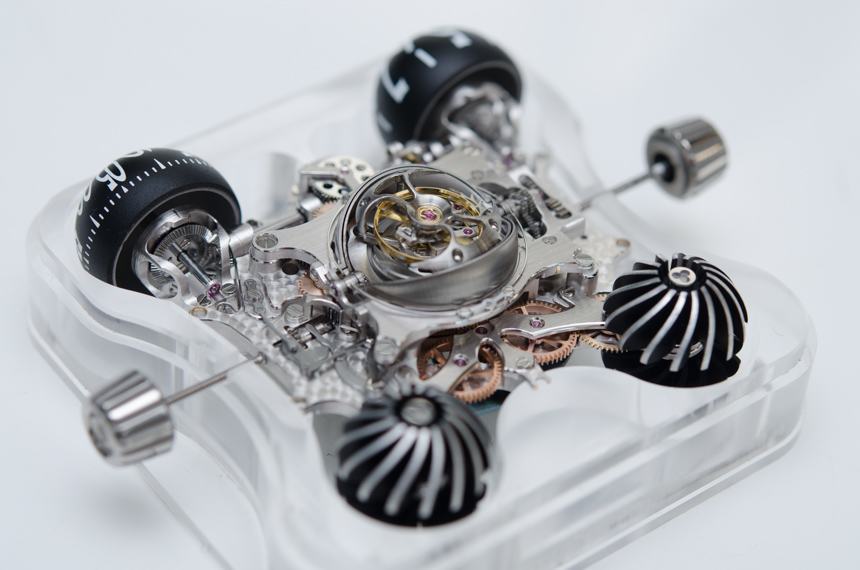
It is a lesser known fact that inside every MB&F Horological Machine there is a bespoke movement, designed to fit into and function exclusively with the particular model in question. The situation is no different with the MB&F HM6 Space Pirate, whose “engine,” as the brand likes to call it, is as unique as the watch it has been conceived for. It is apparent at first sight that the movement closely follows the shape of the case: on one end, the semi-spheres used to display the hours and the minutes can be seen, while on the other end, the four (two sets of two half) turbines dominate. The center of the movement is dedicated to the one-minute flying tourbillon on top, and the automatic winding rotor on the underside.
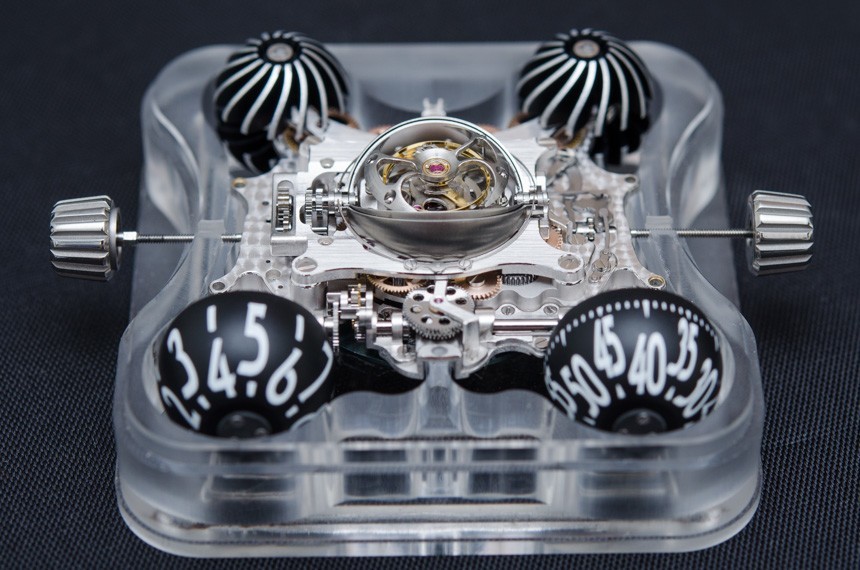
MB&F claims that they worked with David Candaux Horlogerie Créative, and it took more than three years to develop this movement. Once we discover the unusually high amount of extraordinary features of it, it becomes easier to understand why so much time and effort was required. The automatic movement is composed of 475 components and 68 jewels, it runs at the very traditional “tourbillon-speed” of 18,000 vibrations per hour (2.5 Hertz) and has a power reserve of 72 hours. Functionality is deceivingly straight-forward: indication for hours and minutes, automatic winding, and a one minute tourbillon with retractable shield. With the formalities out of the way, let’s get down to business: the close look.
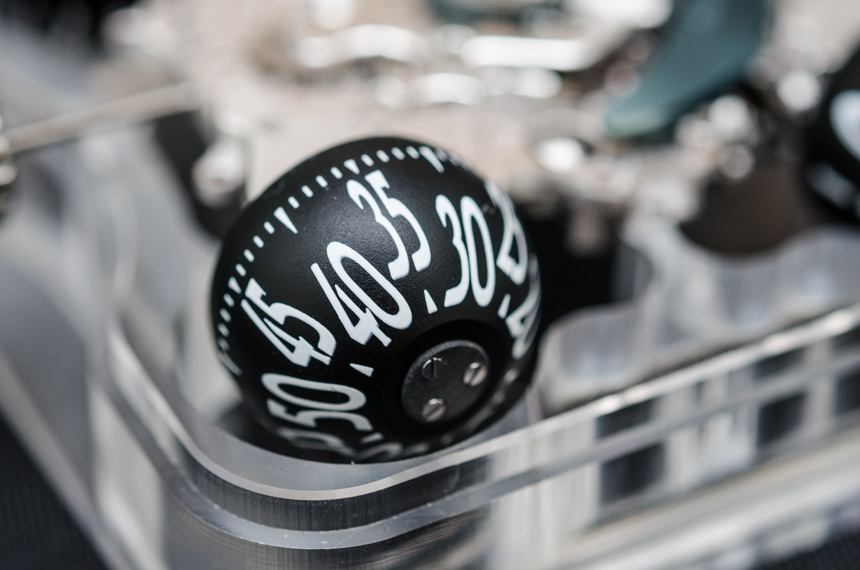
We begin with the hours and minutes indicators – it is a watch, after all, and it has to tell the time! Both are displayed on separate aluminum domes, which were machined from one solid block of metal; as opposed to having been stamped or molded. Milling these domes results in the most accurate and aesthetically pleasing result, at a cost of more time, effort, and energy. Time is indicated by the rotation of the domes and a fixed bright green arrow, with the latter not being a part of the movement, but rather, it goes with the case. The Arabic numerals and the minute track were applied in white paint, and while it does take a bit of getting used to, ultimately, they prove to be rather legible. The domes were made to be literally paper-thin to keep their weight at a minimum, as a thicker and heavier sphere requires considerably more torque and power from the movement, which in turn ruins timekeeping performance.
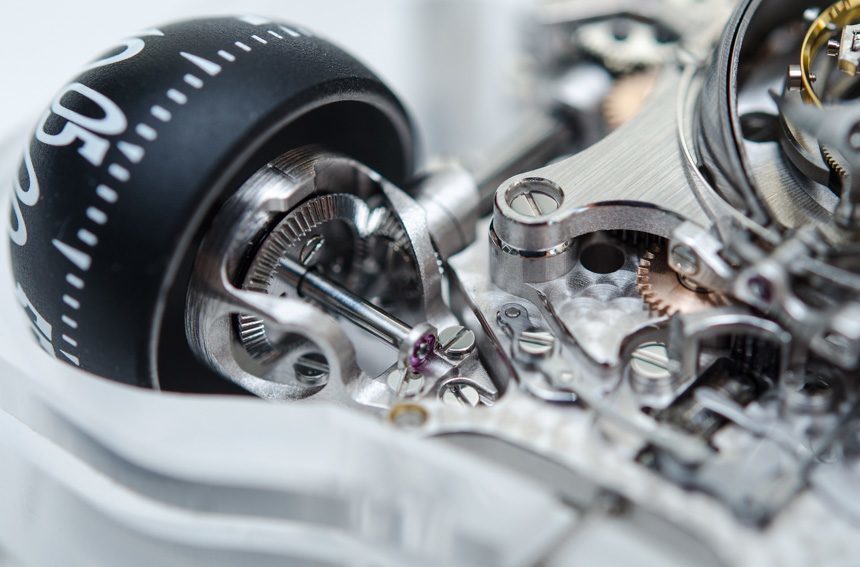
Another issue with these domes is their very position in space: they are perpendicular to the plane of the movement while, quite obviously, the hands on a normal watch are horizontal. The challenge here is to get the “information” (i.e. the time) out of the movement and make these spheres rotate accordingly. The solution appears to be surprisingly similar to what one would see in a car, or rather, a car’s differential, to be more precise.
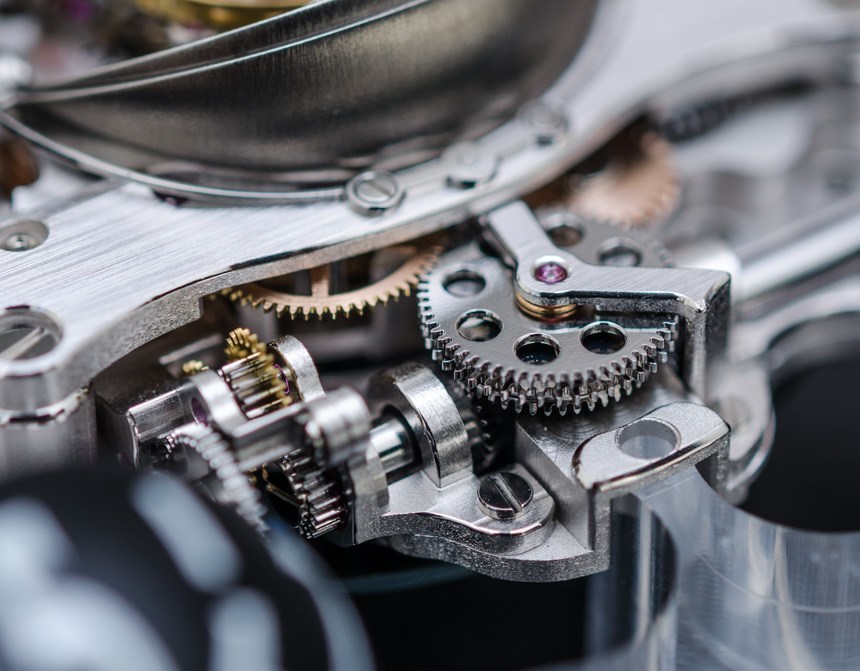
As you can see in the image above, the kept time leaves the normal world of watch movements via a brass wheel and it joins a set of wheels laid out on top of one another – this set of wheels is a differential. A differential is a device that we have seen in a number of other (ultra high-end) watches, and what it does is that it allows axes to rotate at different speeds. What would be a better time to understand how a differential works, if not this? Here’s a hilarious and yet very informative video for you – and I know we are getting into unchartered territories in watch-nerdery, but bear with me, it will be worth your time, I promise. If it gets much too boring, I recommend jumping straight to the 4:30 mark, but don’t blame me if that jump makes it more difficult to understand.

As I said, a differential links three axes and it allows them to rotate at different speeds. This the exact same thing that we have here: think of the drive coming from the movement as the drive coming from the car’s engine. The driving wheel is rotating at one given speed, which then has to be redirected towards the axes linked to the minute and hour domes. The problem is that, for obvious reasons, the minute and hour domes rotate at very different speeds (the minute domes make a full rotation every hour, while it takes the hour dome 12 hours to do the same). Quite clearly, those are different speeds, and unless there’s a differential involved, something is going to break.
It is this ingenious device, the differential, that allows the movement to keep on running as it normally would, but also to drive the two very differently geared axes. Last but not least, you a have a set of gears and pinions, seen to the left of the differential, which make the hour dome rotate at the slower speed. You see, we are merely at the point of discussing how the MB&F HM6 Space Pirate displays the time and it already is proving to be mind-bogglingly complex. All this awesome engineering is involved in displaying the time in this unusual way.
Moving further into the movement, we end up at the one-minute flying tourbillon, literally the centerpiece of the movement. It may seem like a fastidious addition for the sake of having a tourbillon, but actually, the flying tourbillon is the only thing that would work in this case – and here’s why… On a standard, non-tourbillon movement a bridge (well, actually a cock, as it does not have two fixed ends) is securing the balance wheel from the top, while a traditional tourbillon is usually held by a bridge.
By contrast, the flying tourbillon flies because it has nothing that would secure it from the top – and that is exactly what the MB&F HM6 Space Pirate had to have, as the only thing that is above the tourbillon is the sapphire crystal… and the amazing, fold-down titanium shield.
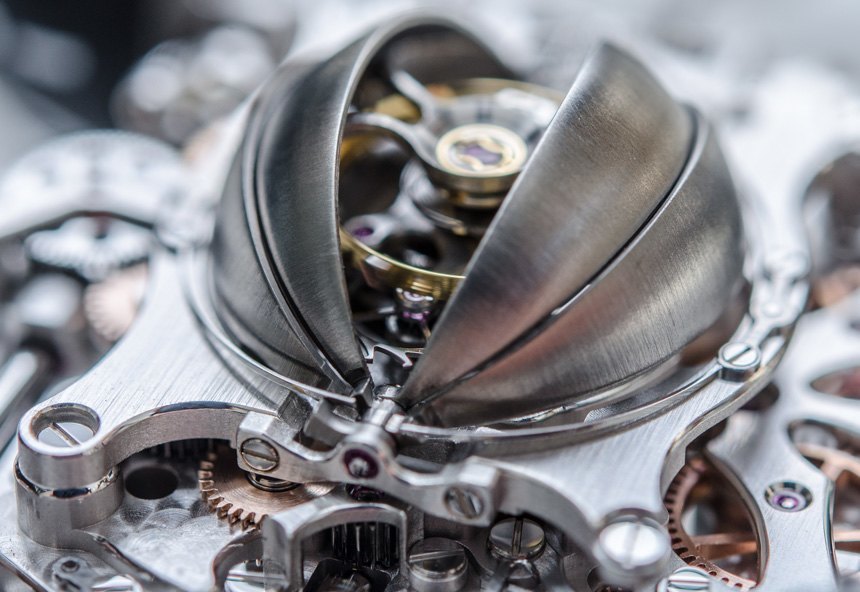
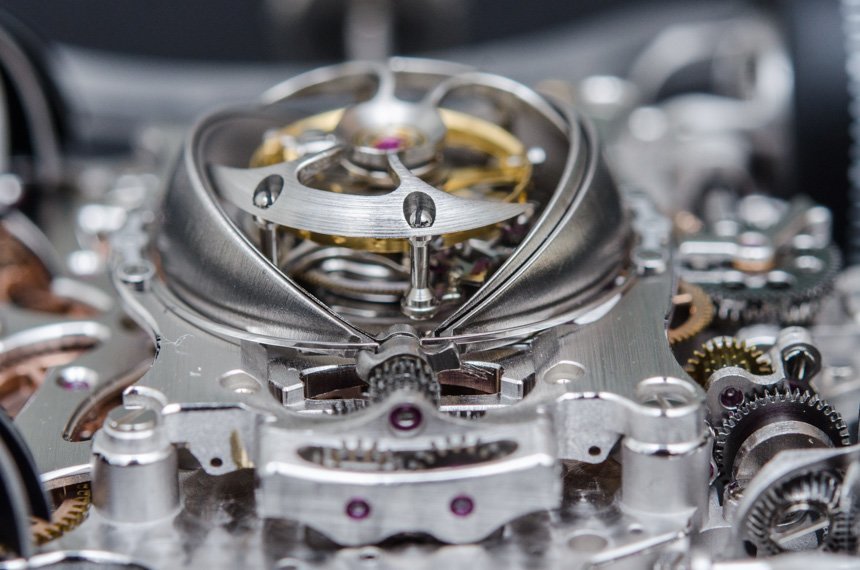
Much like the hour and minute domes, every single one of these titanium blades had to be milled from one single piece of titanium. They have not been cast or stamped, and there are no components welded onto them. Needless to say, they have to be manufactured with extremely small tolerances, otherwise they would either get stuck together, or slide on top of one another when closed. The real issue, again, is in a place where you will never see: right at the part where they are connected to an axis that allows them to slide, i.e., to close and open up.
If you ever used to play with LEGO, I can tell you that these shields look a lot like the visors of the tiny little LEGO helmets. They have tiny bits extending from their sides which, again, allow them to be fixed to an axis. Their brushed finishing and warm metallic hue looks absolutely fantastic in person – and the action with which they close and open is nothing short of what you would expect from a high-end watch.
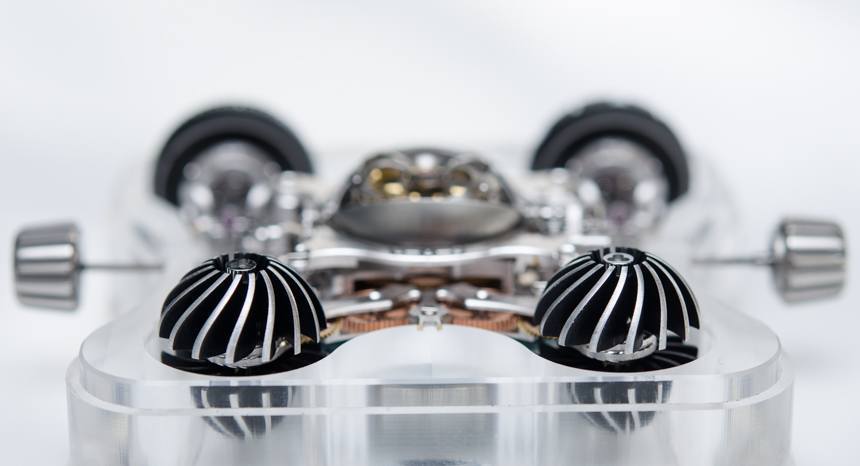
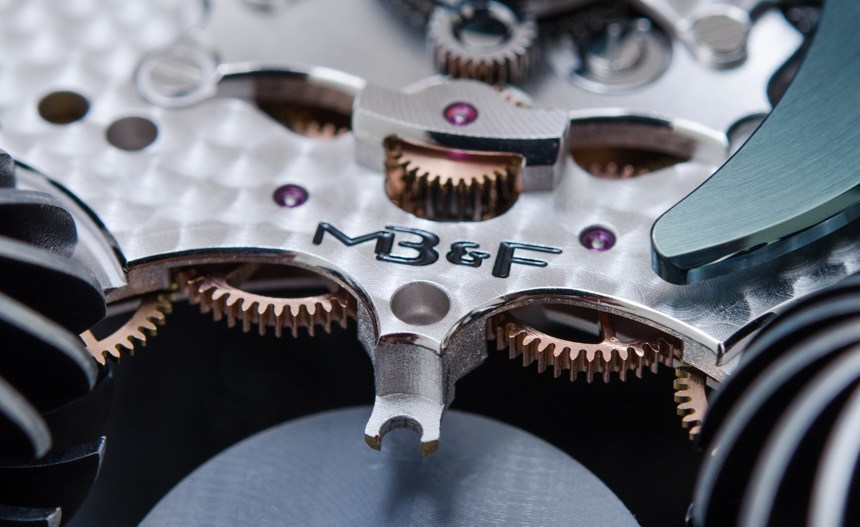
At the other end of the movement are the turbines, which are linked to the automatic rotor of the watch. The four semi-spherical turbines are each composed of 15 curved vanes, machined into four solid hemispheres of aluminum. They had to be made from aluminum because it is light enough to be quickly spun by the movement of the platinum winding rotor (the edge of which, you will see peaking into the image just above).
The rotor is connected to these turbines via a set of brass wheels (again, visible on the image above), which have been geared in a way that they transform a relatively small movement of the rotor into a lot of action on the turbines. It really does work: the turbines do spin crazy fast, which in turn results in quite a bit of mechanical noise. But they are called turbines, not windmills, so I guess that is okay.
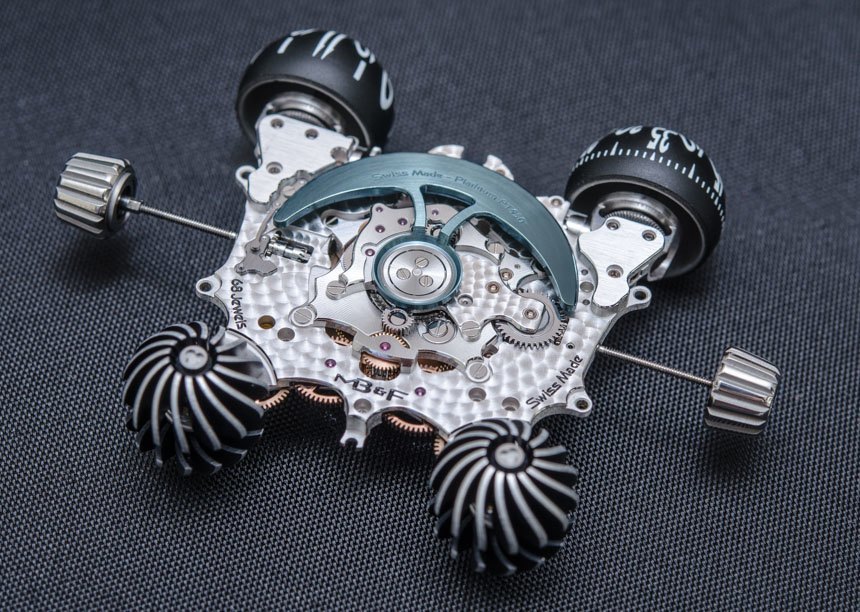
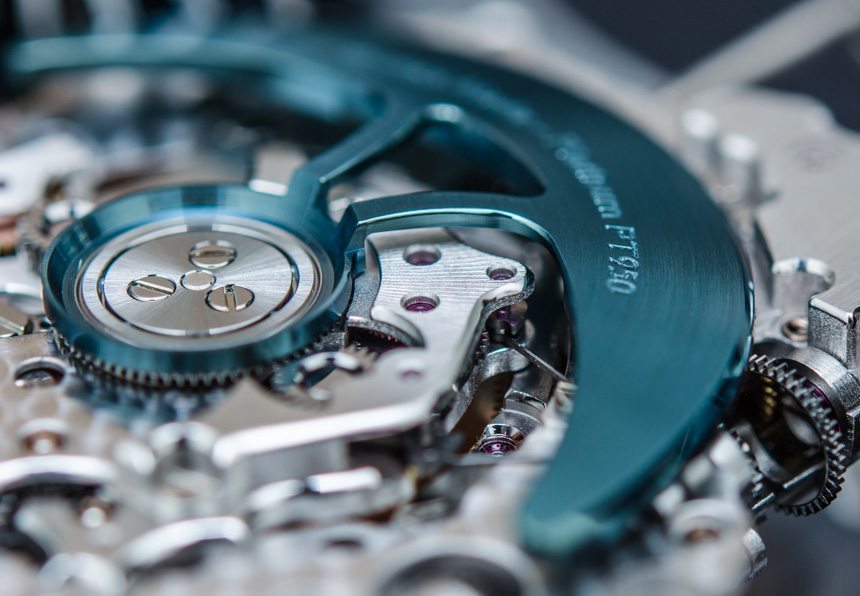
The case-back side of the movement is clearly dominated by the large, blued platinum winding rotor, which is half of the trademark battleaxe design we have grown accustomed to seeing on MB&F watches. Being made of .950 platinum, it is a heavy piece that surely provides enough momentum to wind this beast of a movement and the turbines linked to it. The rotor’s design is also reminiscent of high-end alloys seen on cars, with its two spokes (with beveled and polished edges), the inner skeletonization and the circular center section. MB&F calls it iridescent green, though to me, it showed in more shades of blue than green – it is a beautiful piece of engineering, nonetheless.
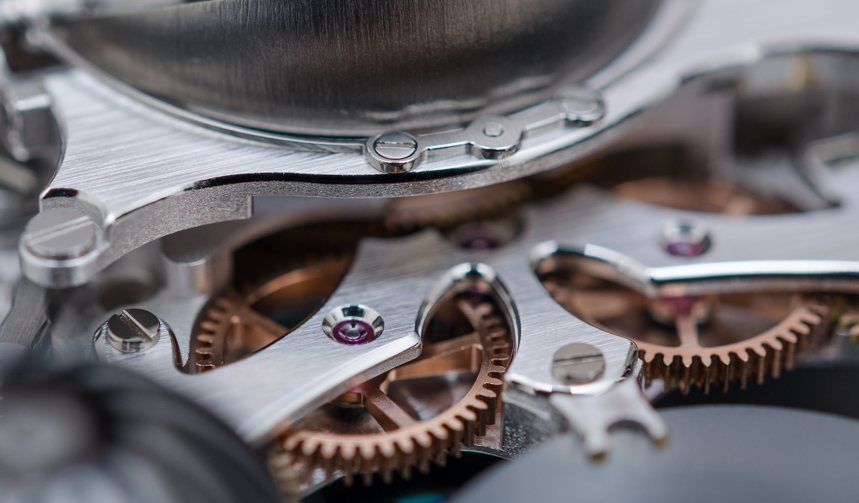
I purposefully left the tastiest part for last: finishing. Chances are that it has already stood out for you from the previous images: there is extensive hand-finishing on just about every component of the movement. Also, we should note that a genuinely microscopic percentage of high-end movements have all components finished to the same standard – to give you an example, just because a movement has beveled screw-heads and polished sinks visible on the back of the movement, that does not mean the same is true for the parts that are inside the movement.
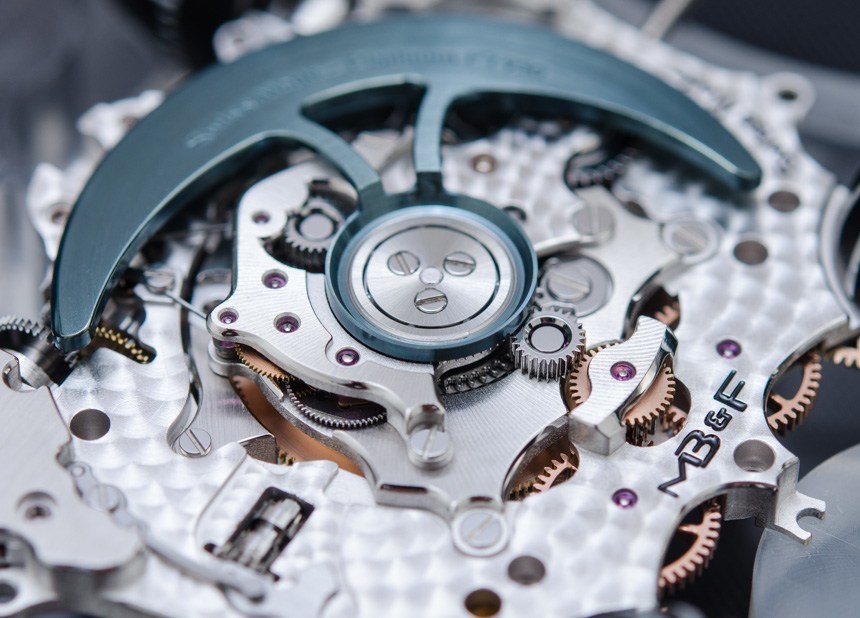
When it comes to the “engine” of the MB&F HM6 Space Pirate, high amounts of hand-applied perlage and long, swirling edges with polished bevels dominate the view. Unsurprisingly, unique movement features necessitate more unusual components (lots of them), and here, even these have been painstakingly hand-finished – notably, it is just about impossible to have these highly unusual parts and their weird shapes and angles decorated by machines.
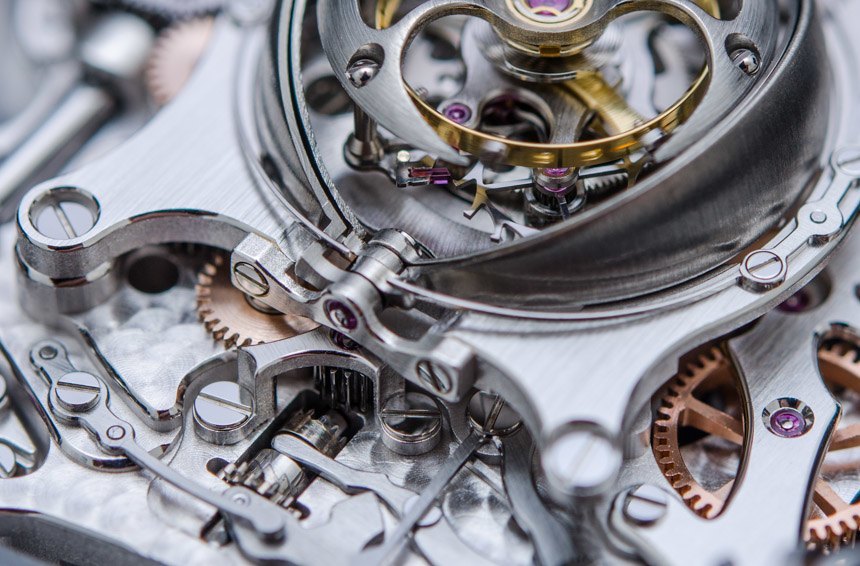
Let’s take a look at the image above and see how the different layers of the bridges follow one another, giving way to this extremely unlikely blend of traditional watch making elements and modern, never-before-seen shapes. Sounds like high praise, but it is due: near the center, on the bottom of the image is the “keyless works” of the watch, which the crown and its stem slides into, with different cams and springs being laid out around it.
Moving on, and we see wheels hidden under these twisty and angular bridges, all acting like structural elements seen in buildings: acting as support for the “main act,” the tourbillon and its shield mechanism. All the different bridges and screw-sinks have polished edges, with alternating perlage and brushed linear finishings… and yet, most of this remains unseen, hidden under the hood, the unique titanium case of the MB&F HM6 Space Pirate.
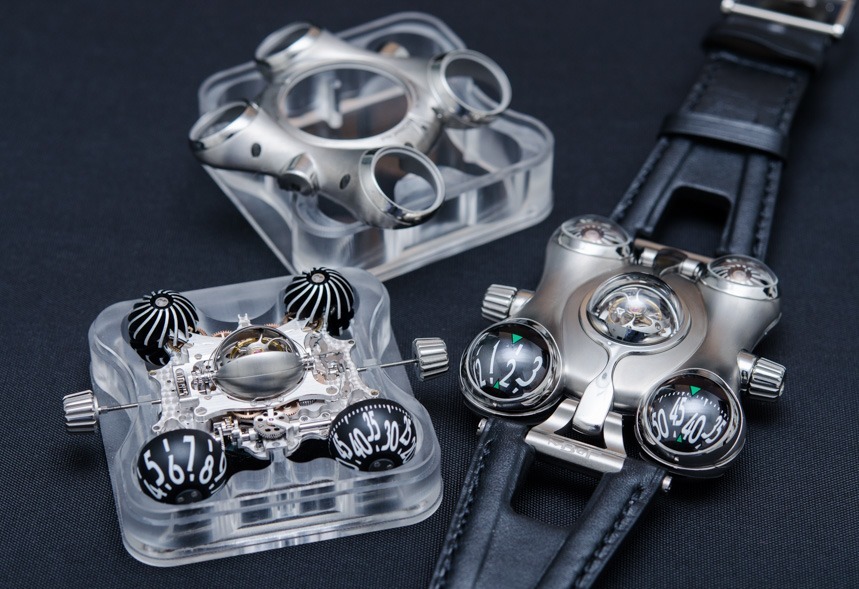
Nonetheless, no matter how hidden these details may be, we are extremely happy that we got the chance to bring these to you and shed light on their stunning beauty and often mind-boggling functionality. This really is watchmaking at its finest, and in this new series, we will continue to bring you unique insight into the inner workings and hidden wonders of iconic watch movements. mbandf.com

